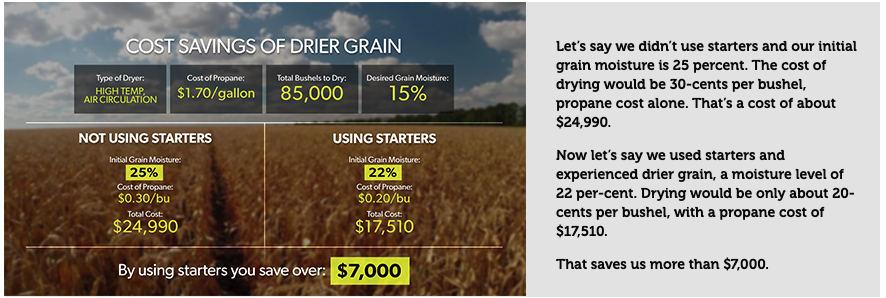Three Lesser-known Advantages of Starter Fertilizers
Thursday, April 1, 2021
Reference: Sponsored Article

Three Lesser-known Advantages of Starter Fertilizers
Beyond boosting yields, the application of spring starter materials provides advantages of early crop growth, drier grain at harvest-time and less phosphorus runoff.
“With spring planting underway, producers can profit from a more complete understanding of the usefulness of starter fertilizers,” says Dr. Robert Mullen, Director of Agronomy at eKonomics.
Early Crop Growth
Starter fertilizers play a key role in fostering crop growth at the beginning of the growing season, especially when the ground is cold and/or in no-till operations.Since starters are applied in close proximity to the new roots, they provide higher availability to the young plants.
“What it all comes down to is soil temperature,” Mullen says. “The reason why that’s important is because the colder the soil temperature, the slower the chemical reaction that makes fertilizer materials available to the plant.”
A field may have an abundant supply of phosphorus, based on soil tests, but that phosphorus isn’t in the right spot for moving into the plant as it begins growing. The starter fertilizer is right where it needs to be to kick start young plants’ root growth.
Drier Grain; Quicker To Mature
“According to a summary review conducted by Purdue University, researchers found that a large percentage of the time, growers experienced drier grain as a result of the application of starters compared to a non-starter treatment,” Mullen says.In some instances, researchers found, grain can be 3 percent drier at harvest.
“The reason this happens is because starters help a plant accumulate biomass faster, which allows for the plant to mature faster, leading to a lower grain moisture level,” Mullen says.
Drier grain means that you can harvest earlier, and you won’t have to pay as large a fee to dry your grain.
“There’s nothing worse than having to wait for your grain to dry below 25 percent moisture to get it out of the field,” Mullen says.
Here’s an illustration of this economic advantage:

Environmentally Responsible
“The third benefit of using starters is an environmental one,” Mullen says. “If I can supply some of the phosphorus that I otherwise would have applied in the fall and shifted a small portion of it over to spring in a starter application, there are two benefits.”The first is one of efficiency, because the application is occurring when the plant actually needs it, matching the timing of the application with plant demand.
Secondly, because the phosphorus is going below the soil surface, it’s not subjected to erosive or runoff loses.
While starter fertilizer cannot replace the necessary broader phosphorus application later, it can offset a small portion of it.
“In the end, when you look at all the logistical, environmental and economic benefits, an investment in starter fertilizer can truly be a sound business decision,” Mullen says.
Learn more at nutrien-ekonomics.com
Sign up to stay connected
- News
- Property Alerts
- Save your favourite properties
- And more!
Joining Farm Marketer is free, easy and you can opt out at any time.
